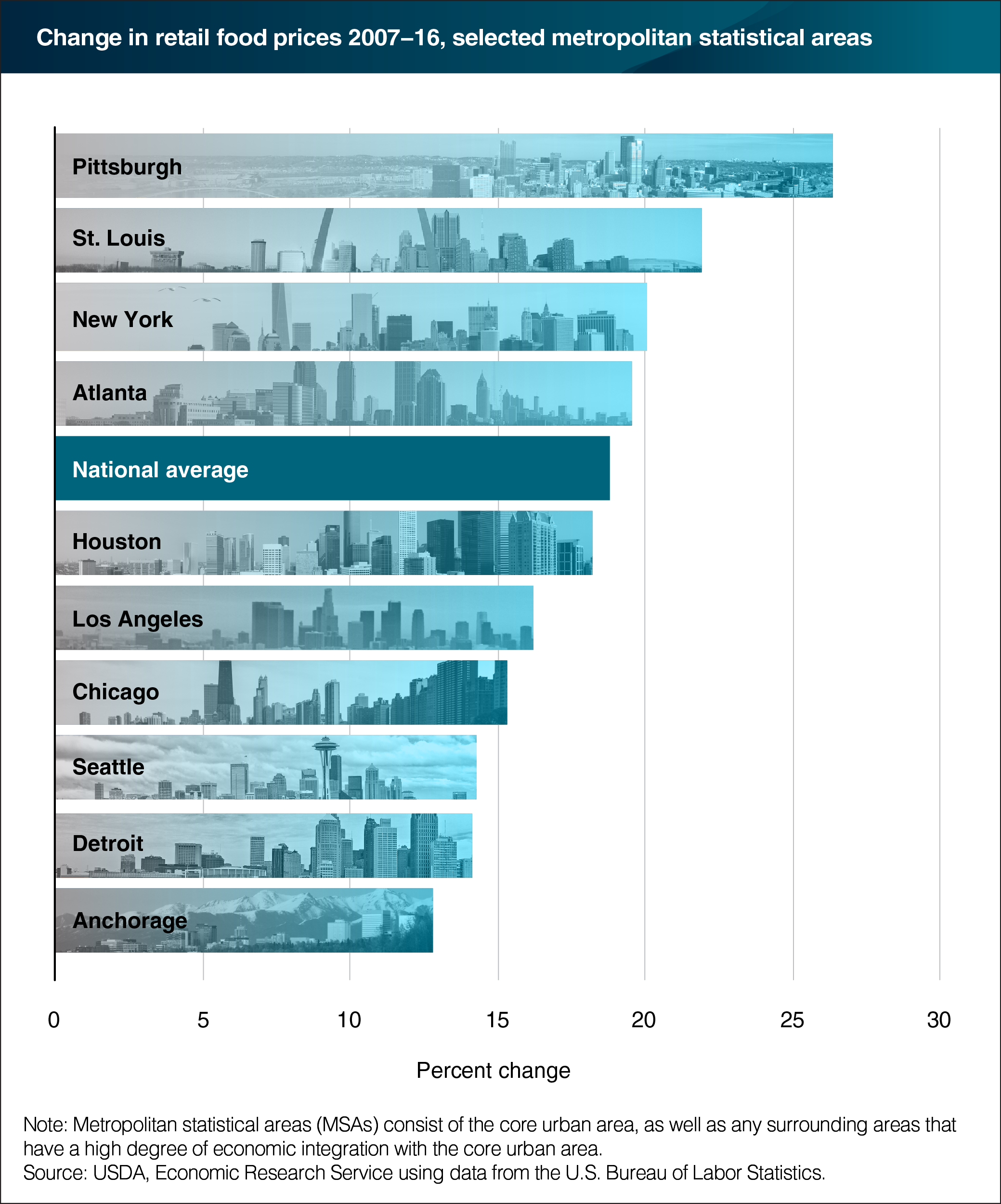Inflation in grocery store food prices varies across U.S. metropolitan areas
- by Annemarie Kuhns and David Levin
- 9/1/2017

Increasing prices (inflation) for food sold in supermarkets, supercenters, convenience stores, and other retailers differ by U.S. metropolitan statistical areas (MSAs). For example, from 2007 to 2016, retail food prices rose 26.4 percent in Pittsburgh but only 12.8 percent in Anchorage. Several factors account for variations in food price inflation across MSAs. Changes to the costs associated with transporting food products to the grocery store can vary geographically, and volatile fuel prices can contribute to variation in retail food price inflation across MSAs. Fluctuations in retail overhead costs, such as labor and rent, may also differ from one area to another. Increases in retail overhead costs are often passed onto consumers as higher prices. However, in MSAs with falling consumer incomes, grocers may not be able to pass on price increases to budget-constrained consumers, dampening food price inflation. This chart appears in the ERS data product, Food Price Outlook, updated July 25, 2017.
We’d welcome your feedback!
Would you be willing to answer a few quick questions about your experience?

